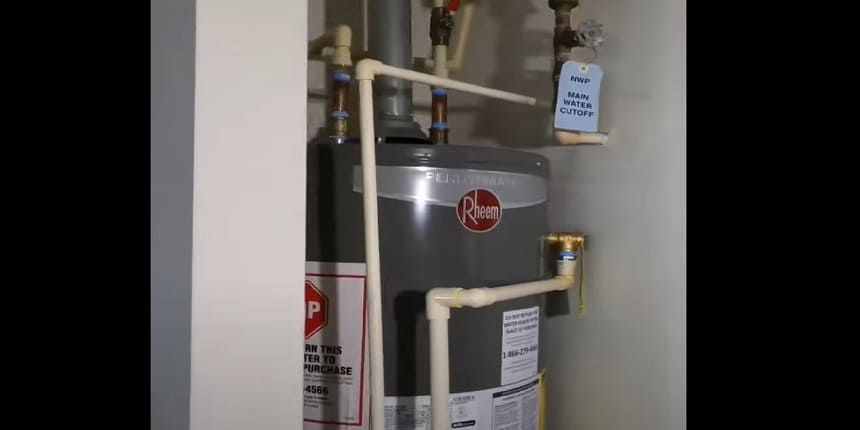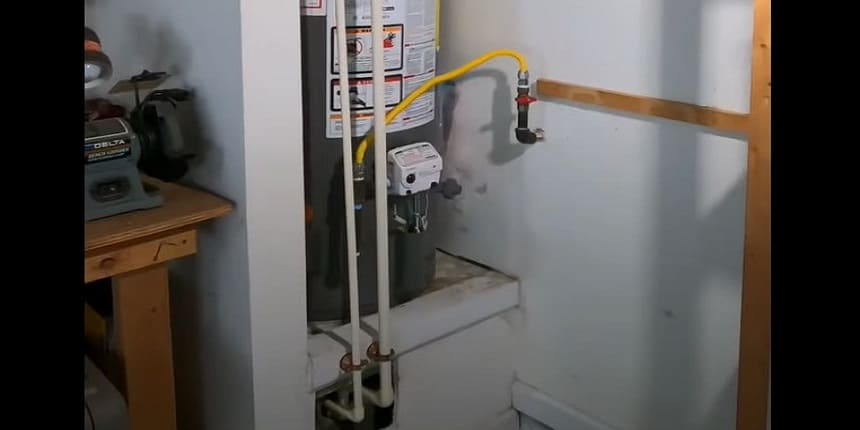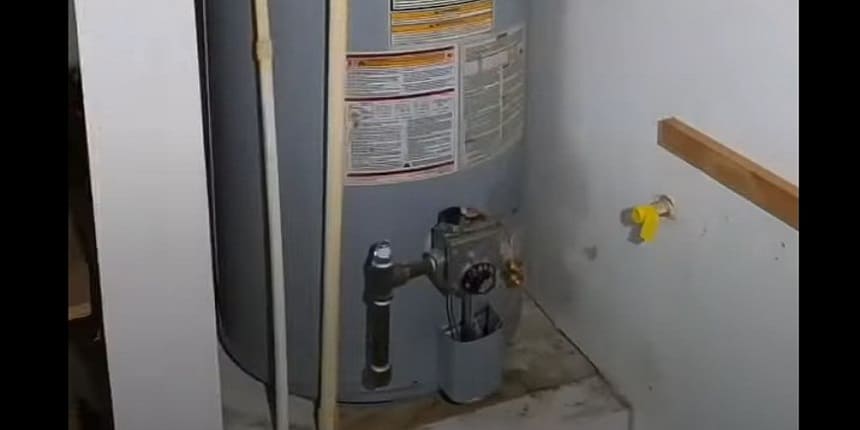To install a hot water heater with CPVC pipe, follow manufacturer guidelines for proper installation steps. Ensure all connections are securely fastened.
Installing a hot water heater with CPVC pipe is a straightforward process when following the manufacturer’s instructions. By carefully securing all connections, you can ensure a safe and effective setup. In this blog post, we will delve into the essential steps and considerations for installing a hot water heater using CPVC pipes.
Whether you are a DIY enthusiast or a homeowner looking to understand the installation process, this guide will provide you with valuable insights to successfully complete the task. Let’s explore how to set up your hot water heater with CPVC piping for optimal performance and safety.

Page Contents
- 1 Introduction To Cpvc Pipes For Hot Water Heaters
- 2 Tools And Materials Needed cpvc water heater installation
- 3 water heater pipe connection Pre-installation Checklist
- 4 Step-by-step Installing Hot Water Heater With CPVC Pipe Guide
- 5 Testing For Leaks With CPVC Pipe
- 6 Insulating Cpvc Pipes
- 7 Maintenance Tips For Cpvc Water Heater Connections
- 8 Troubleshooting Common Issues Hot Water Heater With CPVC Pipe
- 9 Frequently Asked Questions
- 9.1 How To Choose The Right Size Of Cpvc Pipe For A Water Heater Installation?
- 9.2 What Are The Advantages Of Using Cpvc Pipes For A Hot Water Heater Installation?
- 9.3 What Is The Recommended Temperature Setting For A Hot Water Heater With Cpvc Pipes?
- 9.4 Can Cpvc Pipes Be Used For Both Gas And Electric Hot Water Heaters?
- 9.5 What Are The Essential Safety Measures To Consider During A Cpvc Pipe Hot Water Heater Installation?
- 10 Conclusion
Introduction To Cpvc Pipes For Hot Water Heaters
CPVC pipes are a popular choice for hot water heaters due to their numerous benefits. These pipes are made from a special type of plastic that is able to withstand high temperatures and pressures.
One of the main advantages of using CPVC pipes is that they are resistant to corrosion and chemical degradation, which means that they last longer than other materials like copper or galvanized steel. Additionally, CPVC pipes are more affordable than copper pipes, making them a cost-effective option for homeowners.
When compared to other piping materials, CPVC pipes have several advantages. For example, they are easier to install than copper pipes because they are lightweight and require fewer fittings.
They are also more flexible than copper pipes, which means that they can be bent and shaped to fit tight spaces. Additionally, CPVC pipes do not require any special tools or skills to install, which makes them a popular choice for DIY enthusiasts.
| Piping Material | Advantages | Disadvantages |
|---|---|---|
| CPVC | -Resistant to corrosion and chemical degradation -Affordable -Easy to install -Flexible | -Not as durable as copper -Cannot be used for gas lines |
| Copper | -Durable -Can be used for gas lines -Resistant to UV rays | -Expensive -Difficult to install -Prone to corrosion and leaks over time |
| Galvanized Steel | -Durable -Resistant to rust -Can be used for gas lines | -Prone to corrosion over time -Difficult to install -Not suitable for hot water |
Tools And Materials Needed cpvc water heater installation
Installing a hot water heater with a CPVC pipe requires a few essential tools and materials.
The list includes A propane torch, pipe cutter, adjustable wrench, tape measure, and screwdriver are needed.
For the CPVC pipes and fittings, you will need to have
- CPVC pipes
- CPVC fittings
- CPVC solvent cement
- CPVC primer
- Teflon tape
If you find that you’re missing any items from this list, please make sure to have all necessary products on hand prior to starting the installation. Use the link below to bring them from Amazon.
CPVC pipes for water heater: CPVC pipes
CPVC fittings for water heater: CPVC fittings
CPVC solvent cement for water heater: CPVC solvent cement
CPVC primer for water heater: CPVC primer
Teflon tape for water heater: Teflon tape
Additionally, safety equipment such as gloves, safety glasses, and a fire extinguisher are essential for this installation.
water heater pipe connection Pre-installation Checklist
Before installing a hot water heater with CPVC pipe, there are a few important steps to take.

Checklist #1: First, it’s crucial to check the compatibility of the water heater with CPVC pipe. Ensure that the manufacturer approves the use of CPVC for your specific model.
Checklist #2: Next, you’ll need to measure and cut the CPVC pipe to the appropriate length. It’s essential to use a pipe cutter to ensure clean and precise cuts. Remember to measure twice and cut once to avoid any wastage.
Checklist #3: Once the pipe is cut, it’s time for the dry fitting process. This involves assembling the pipes and fittings without using any adhesive. Dry fitting allows you to ensure that all the pieces fit together correctly before applying the solvent cement.
By following these steps, you can ensure a smooth and successful installation of a hot water heater using CPVC pipe.
Step-by-step Installing Hot Water Heater With CPVC Pipe Guide
This step-by-step installation guide simplifies the process of installing a hot water heater with CPVC pipe. The clear instructions ensure a seamless setup for efficient water heating in your home.
Installing a hot water heater with CPVC pipe requires a step-by-step approach.
Step 1: Firstly, start by removing the old piping.
Step 2: Next, prepare the CPVC pipes by cutting them to the required lengths. Remember to deburr the edges for a smooth connection.
When connecting the pipes to the water heater, ensure a proper fit by using the appropriate fittings and solvent cement. Follow the manufacturer’s instructions for the best results. Once the connections are made, secure them tightly to prevent any leaks.

Testing For Leaks With CPVC Pipe
When installing a hot water heater with CPVC pipe, it’s crucial to thoroughly test for leaks. Pressure testing methods are commonly used to ensure the system’s integrity.
One effective approach is the air pressure test, which involves pressurizing the system and monitoring for any drops in pressure that could indicate leaks. Another method is the water pressure test, where the system is filled with water and observed for any signs of leakage.
If leaks are detected, it’s essential to promptly identify and fix the issues to prevent potential damage. Regular testing and maintenance can help ensure the reliable performance of the hot water heater system.
Insulating Cpvc Pipes
Insulating CPVC pipes is crucial for energy efficiency and pipe protection. By insulating the pipes, you can prevent heat loss and reduce the risk of freezing in cold temperatures.
When it comes to choosing the right insulation, opt for materials that are suitable for CPVC pipes and provide adequate insulation.
Proper installation techniques are essential to ensure the insulation is effective. Wrapping the pipes with insulation and securing with tape can help maintain optimal temperature and minimize heat transfer.
Moreover, insulating CPVC pipes contributes to a more sustainable and cost-efficient plumbing system.
Maintenance Tips For Cpvc Water Heater Connections
Routine Inspection: Regularly check CPVC pipe connections for any signs of leaks or damage.
Cleaning and Upkeep: Keep the pipes clean by wiping them with a soft cloth. When to Replace CPVC Pipes: Replace pipes if you notice cracks or discoloration.
Troubleshooting Common Issues Hot Water Heater With CPVC Pipe
When installing a hot water heater with CPVC pipe, troubleshooting common issues may arise. Check for leaks, ensure proper fittings, and verify the system’s pressure to address any potential problems effectively. Regular maintenance and professional inspection can prevent future issues.
| Water Pressure Problems | Check for clogs in pipes and clean filters regularly. |
| Temperature Fluctuations | Adjust the thermostat and insulate pipes for consistent temperatures. |
| Leakage Issues | Inspect connections for tightness and replace damaged parts promptly. |
Frequently Asked Questions
How To Choose The Right Size Of Cpvc Pipe For A Water Heater Installation?
To determine the correct size, consider the heater’s capacity and the distance to the fixtures.
What Are The Advantages Of Using Cpvc Pipes For A Hot Water Heater Installation?
CPVC pipes are corrosion-resistant, durable, and cost-effective, making them an ideal choice.
What Is The Recommended Temperature Setting For A Hot Water Heater With Cpvc Pipes?
Setting the temperature to 120 degrees Fahrenheit is generally recommended for safety and energy efficiency.
Can Cpvc Pipes Be Used For Both Gas And Electric Hot Water Heaters?
Yes, CPVC pipes can be used for both gas and electric water heaters, providing proper installation guidelines are followed.
What Are The Essential Safety Measures To Consider During A Cpvc Pipe Hot Water Heater Installation?
Ensure proper ventilation, secure anchoring of the pipes, and compliance with local building codes and regulations.
Conclusion
Installing a hot water heater with CPVC pipe is a feasible and cost-effective option for homeowners. It provides durability, flexibility, and ease of installation. However, it is crucial to follow the guidelines and regulations set by the manufacturer and local building codes to ensure safety and efficient performance.
By choosing CPVC pipe, homeowners can enjoy hot water without worrying about leaks or corrosion for years to come.
